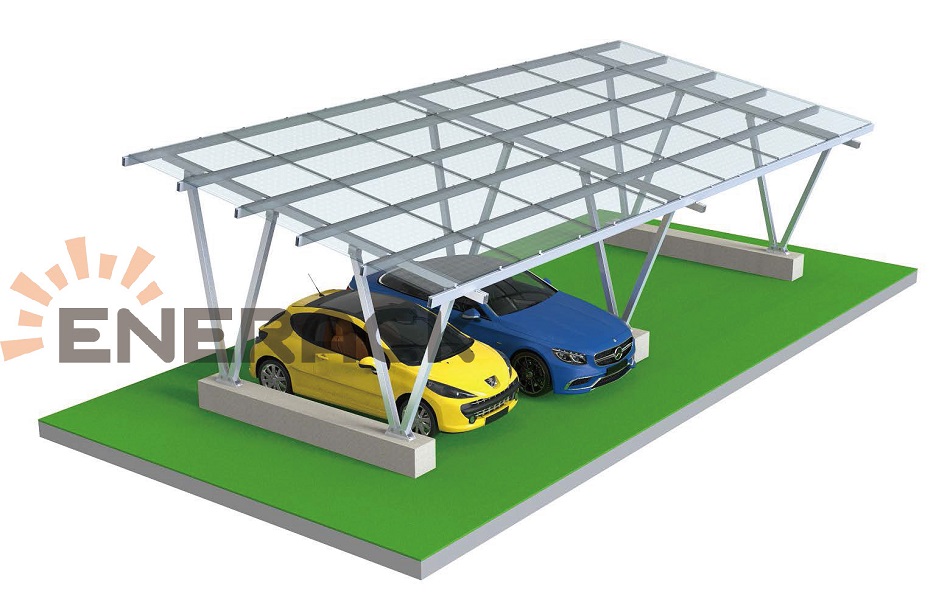Seven major changes that photovoltaic power generation has brought us
In recent years, the government has developed and utilized renewable resources such as solar energy on a large scale, cultivating the new energy industry as a strategic leading industry for a new round of economic growth, and promoting the construction of new energy projects. So, what opportunities for wealth creation does photovoltaics bring us, and what changes will it bring us? Sunpal will take you to see it together.
wealth creation opportunity
1. Industrial and commercial photovoltaic roofs
Today, a group of qualified industrial and commercial enterprises have installed distributed photovoltaic power generation systems on their roofs. Due to the need to control smog, the country will introduce relevant policies in more cities in the future to allow the installation of photovoltaic new energy systems on the roofs of industrial and commercial facilities and public facilities.
2. Carbon trading starts
Due to the needs of environmental protection, the country may restrict carbon emissions through carbon emission taxes. At this time, clean new energy photovoltaics have become the darling. Individuals or enterprises can join the carbon trading system by installing photovoltaic power plants, and get more by selling green electricity. income.
3. Low-carbon products are more popular
When a product is labeled with a green label for electricity, similar to foods with calories marked, and all products are marked with how much electricity was used to produce the product and how much carbon dioxide is produced, people will choose similar products with less carbon emissions to promote environmental protection.
4. Rural health benefits
The popularization of distributed photovoltaics can play a very good role in environmental protection. When various facilities in rural areas can use photovoltaics, the ecological environment in rural areas will also be greatly improved.
Photovoltaic changes every aspect of life
1. Fashion and beauty become the focus
The solar power system is equipped with beautiful buildings, elegant colors, fashion, and the overall effect is beautiful and atmospheric.
2. Energy saving, environmental protection and smog reduction
Photovoltaic power generation system is a safe, green and sustainable clean energy, which not only saves energy but also reduces carbon dioxide emissions, and the effect of planting trees can be achieved by generating electricity every day.
3. Heat insulation and cooling in summer
The solar cell module absorbs a wide range of spectra and can absorb solar radiation to a large extent, thus playing a good heat insulation effect.
current location : home
What benefits does photovoltaic power generation bring us?
What is the Difference Between Solar Street Lights and Normal Street Lights?
In the realm of street lighting, the evolution of technology has led to the emergence of solar-powered alternatives alongside traditional grid-connected lights. This development raises the pertinent question: what sets solar street lights apart from their conventional counterparts? Let’s delve into the distinctions and advantages of each.
1. Power Source:
Solar Street Lights: These utilize photovoltaic panels to harness sunlight and convert it into electricity. This means they operate independently of the electrical grid, relying solely on solar energy. High efficiency small solar panels play a crucial role here, efficiently capturing sunlight and transforming it into usable power.
Normal Street Lights: Conversely, traditional street lights are powered by electricity from the grid. They require a constant connection to the power supply network, making them dependent on infrastructure and susceptible to power outages.
2. Environmental Impact:
Solar Street Lights: By harnessing renewable energy from the sun, these lights have a significantly lower carbon footprint compared to grid-powered lights. They contribute to reducing greenhouse gas emissions and mitigating environmental degradation.
Normal Street Lights: Grid-connected lights rely on non-renewable energy sources such as coal or natural gas, leading to higher emissions and environmental harm.
3. Installation and Maintenance:
Solar Street Lights: Installation of solar street lights is often simpler and more cost-effective since they do not require extensive wiring or trenching for power connections. Additionally, their off-grid nature means they can be conveniently portable, making them suitable for remote or temporary lighting needs. Small size solar panels off-grid power facilitates flexibility in placement and installation.
Normal Street Lights: These lights necessitate complex installation procedures involving trenching for underground wiring and connection to the electrical grid. Maintenance also requires periodic checks and repairs to the electrical components.
4. Cost Efficiency:
Solar Street Lights: While the initial investment for solar street lights may be higher due to the cost of photovoltaic panels and batteries, they offer long-term cost savings by eliminating electricity bills and reducing maintenance expenses.
Normal Street Lights: Although traditional street lights may have lower upfront costs, they incur ongoing expenses for electricity consumption and maintenance, making them less cost-effective in the long run.
The key disparities between solar street lights and normal street lights lie in their power source, environmental impact, installation, maintenance, and cost efficiency. Solar street lights, powered by conveniently portable small solar panels, offer a sustainable and independent lighting solution with minimal environmental footprint and long-term economic benefits. As the world embraces renewable energy technologies, solar street lights stand out as a beacon of innovation in the realm of urban illumination.
...U Plus Series Pitched Roof Mounting System
U Plus series is the new pitched roof mounting system products of Enerack.
1.Use the U type rail and Aluminum clamps combination make installation easier and faster than traditional installation methods,saving more time for installer;
2.Hidden rail connection will be more beautiful and integrated,completely avoiding mutual interference with mid clamp;
3.The U type design of R43 rail can store cables inside the U type rail,making it more neatly and beautiful;
4.U Plus series can be fully compatible with the existing standard products of Enerack,so for this not need to worry;
5.We offer two colors silver and black oxidation for your choose.
Click here for details U plus solar mounting systems.
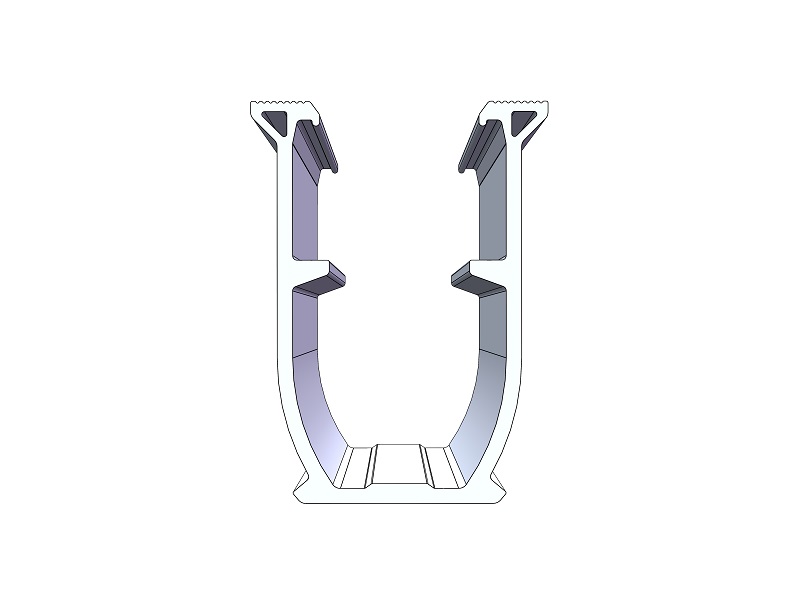


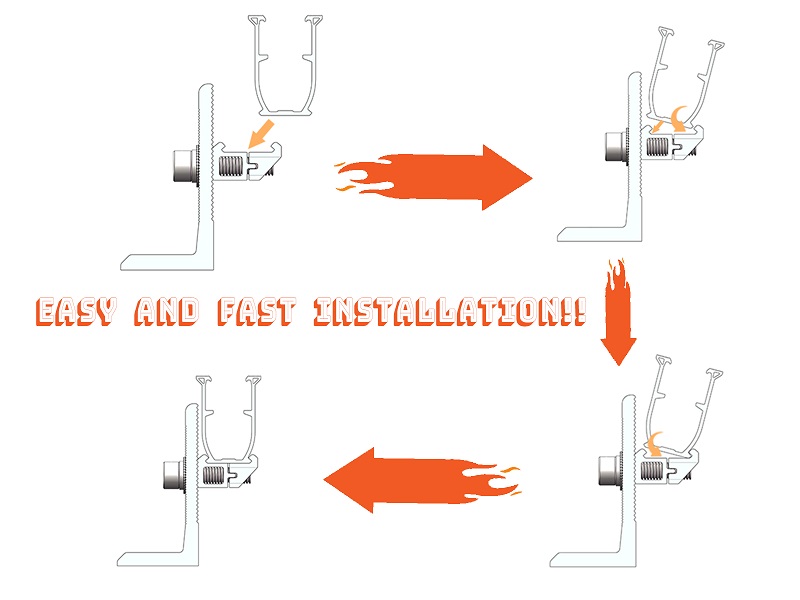
...
What are the advantages of solar carports?
Solar carports are a rapidly growing trend in the renewable energy and transportation sectors, offering numerous advantages for both individuals and businesses. Enerack is professional solar carport mounting system manufacturer, our PV carport mounting system offers a simplified and economical solutions that provides a perfect combination of shade parking and solar power generation as well as electric vehicle charging. It applied for family parking, commercial parking, awnings and even bus stops. A residential solar carport is more than just a car shelter with a PV system. Solar carports are highly versatile and provide many opportunities to reduce carbon footprint as well as energy costs.
Standard carport system
Here are some key advantages of solar carports:
1. Clean, Renewable Energy Generation: Solar carports harness the power of the sun to generate clean, renewable energy. By installing solar panels on carports, ample energy can be produced while reducing reliance on fossil fuels and decreasing carbon emissions.
2. Shaded Parking and Weather Protection: Solar carports provide shade for parked vehicles, protecting them from direct sunlight, rain, hail, and other weather elements. This helps preserve the condition and lifespan of vehicles, minimizing the need for costly maintenance and repairs.
3. Cost Savings: Solar carports offer significant cost savings in multiple ways. Firstly, they generate electricity that can offset or even eliminate utility bills. By utilizing the solar energy generated, car owners can reduce their reliance on the grid and save money in the long run. Additionally, solar carports can also provide covered parking, which can save vehicle owners money on expensive indoor parking fees.
4. Increased Property Value: Installing a solar carport can enhance the overall value of a property. Solar-powered amenities are highly desirable among homebuyers and businesses alike, as they demonstrate a commitment to sustainability and reduced energy costs. This can lead to higher property resale values and attract environmentally conscious buyers.
5. Sustainable Branding and Marketing: For businesses, solar carports offer an opportunity to showcase their commitment to sustainability and environmental responsibility. By prominently displaying solar panels and promoting clean energy initiatives, companies can strengthen their brand image and attract environmentally conscious customers. This can enhance marketing efforts and differentiate businesses from competitors.
Solar carports provide a range of advantages, including clean energy generation, weather protection for vehicles, cost savings, increased property value, and sustainable branding opportunities. As the world continues to embrace renewable energy solutions, Enerack solar carports offer a practical and environmentally friendly option for both individuals and businesses.
Waterproof standard carport system
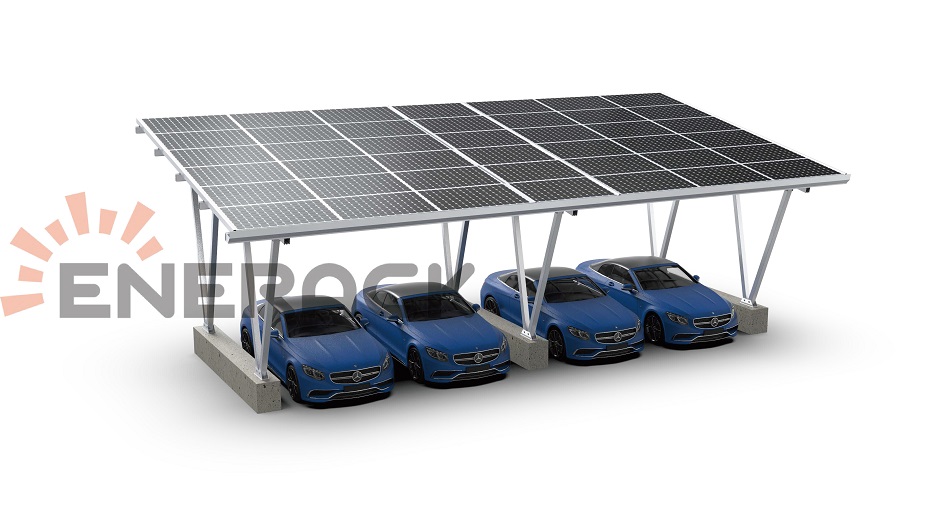
Exciting News! Construction Begins for 0.34MW Xiamen National Institute of Accounting Solar Power Project!
On March 27, 2024, C&D Inc (600153. SH) announced the official commencement of construction for the integrated project of the 0.34MW Xiamen National Institute of Accounting Distributed Photovoltaic Power Station and Charging Pile under C&D Emerging Energy Co., Ltd.
Located within the scenic Xiamen National Institute of Accounting, the project covers an area of 1650 square meters, including 450 square meters of roof area and 1200 square meters of carport area (BIPV). The project has a capacity of 0.34 megawatts. The power station consists of 586 pieces of 580W/panel high-efficiency monocrystalline silicon solar modules and 3 units of 125KW inverters, utilizing a 380V low-voltage grid connection distribution system. The project adopts the "self-generation for self-use" model, essentially achieving 100% self-consumption.
According to calculations, it is estimated that the average annual electricity generation after the completion of the project could reach 373,000 kWh, saving approximately 134 tons of standard coal per year and reducing carbon dioxide emissions by about 371 tons, thus demonstrating significant social, economic, and environmental benefits.
Xiamen National Institute of Accounting (a research institute directly under China's Ministry of Finance) is an important training base for high-level financial and accounting talents in China. It is the location of the "Belt and Road" Financial and Economic Development Research Center and ESG Research Center initiated by the Chinese government. It is a modern, intelligent, and landscaped training, teaching, and research institution with international standards, dedicated to promoting the concept of green energy and sustainable development.
By collaborating with Xiamen National Institute of Accounting, C&D Emerging Energy Co., Ltd responds to the national dual-carbon policy, fully utilizes roof resources and abundant solar energy resources for photovoltaic power generation, jointly undertaking the social responsibility of energy conservation and emission reduction, and establishing a positive corporate and university image.
The groundbreaking of the 0.34MW photovoltaic power station project at Xiamen National Institute of Accounting signifies C&D Emerging Energy Co., Ltd's firm step forward in the construction of distributed photovoltaic power stations. In the future, C&D Emerging Energy Co., Ltd will continue to delve into the investment and development of distributed photovoltaics and other new energy fields, making unremitting efforts to create a green living environment and contribute to the nation's goals of peak carbon emissions and carbon neutrality.
Located within the scenic Xiamen National Institute of Accounting, the project covers an area of 1650 square meters, including 450 square meters of roof area and 1200 square meters of carport area (BIPV). The project has a capacity of 0.34 megawatts. The power station consists of 586 pieces of 580W/panel high-efficiency monocrystalline silicon solar modules and 3 units of 125KW inverters, utilizing a 380V low-voltage grid connection distribution system. The project adopts the "self-generation for self-use" model, essentially achieving 100% self-consumption.
According to calculations, it is estimated that the average annual electricity generation after the completion of the project could reach 373,000 kWh, saving approximately 134 tons of standard coal per year and reducing carbon dioxide emissions by about 371 tons, thus demonstrating significant social, economic, and environmental benefits.
Xiamen National Institute of Accounting (a research institute directly under China's Ministry of Finance) is an important training base for high-level financial and accounting talents in China. It is the location of the "Belt and Road" Financial and Economic Development Research Center and ESG Research Center initiated by the Chinese government. It is a modern, intelligent, and landscaped training, teaching, and research institution with international standards, dedicated to promoting the concept of green energy and sustainable development.
By collaborating with Xiamen National Institute of Accounting, C&D Emerging Energy Co., Ltd responds to the national dual-carbon policy, fully utilizes roof resources and abundant solar energy resources for photovoltaic power generation, jointly undertaking the social responsibility of energy conservation and emission reduction and establishing a positive corporate and university image.
The groundbreaking of the 0.34MW photovoltaic power station project at Xiamen National Institute of Accounting signifies C&D Emerging Energy Co., Ltd.'s firm step forward in the construction of distributed photovoltaic power stations. In the future, C&D Emerging Energy Co., Ltd will continue to delve into the investment and development of distributed photovoltaics and other new energy fields, making unremitting efforts to create a green living environment and contribute to the nation's goals of peak carbon emissions and carbon neutrality.
...Unveiling SpolarPV's S-Elite 495W Solar Panel Durability and Efficiency Redefined
Introduction:
SpolarPV proudly introduces the latest addition to our S-Elite series – the S-Elite 495W Solar Panel. In this blog, we delve into the exceptional durability and efficiency of this cutting-edge solar solution.
Durability Against Extreme Environmental Conditions:
The S-Elite 495W Solar Panel is engineered to withstand the harshest environmental conditions with ease. Its robust design ensures durability against extreme weather, high mechanical loads, and even potential-induced degradation (PID), guaranteeing optimal performance and longevity.
Efficiency Beyond Expectations:
Powered by TOPCon (Tunnel Oxide Passivated Contact) technology and featuring 182mm PERC solar cells utilizing half-cut cell technology, the S-Elite 495W panel achieves an outstanding 22.86% conversion efficiency. This remarkable efficiency ensures maximum power generation, even in challenging conditions, making it a reliable choice for both residential and commercial applications.
Anti-Reflection Coating for Enhanced Performance:
Equipped with anti-reflection coating, the S-Elite 495W Solar Panel minimizes light reflection, optimizing energy absorption and performance. This feature ensures consistent and efficient energy production throughout its operational life.
Conclusion:
SpolarPV's S-Elite 495W Solar Panel sets a new standard in durability and efficiency, providing a reliable and sustainable energy solution for various applications. With its robust construction, high conversion efficiency, and resistance to extreme environmental conditions, this solar panel is poised to redefine the future of solar energy generation. Experience unmatched durability and efficiency with SpolarPV's S-Elite 495W Solar Panel today.
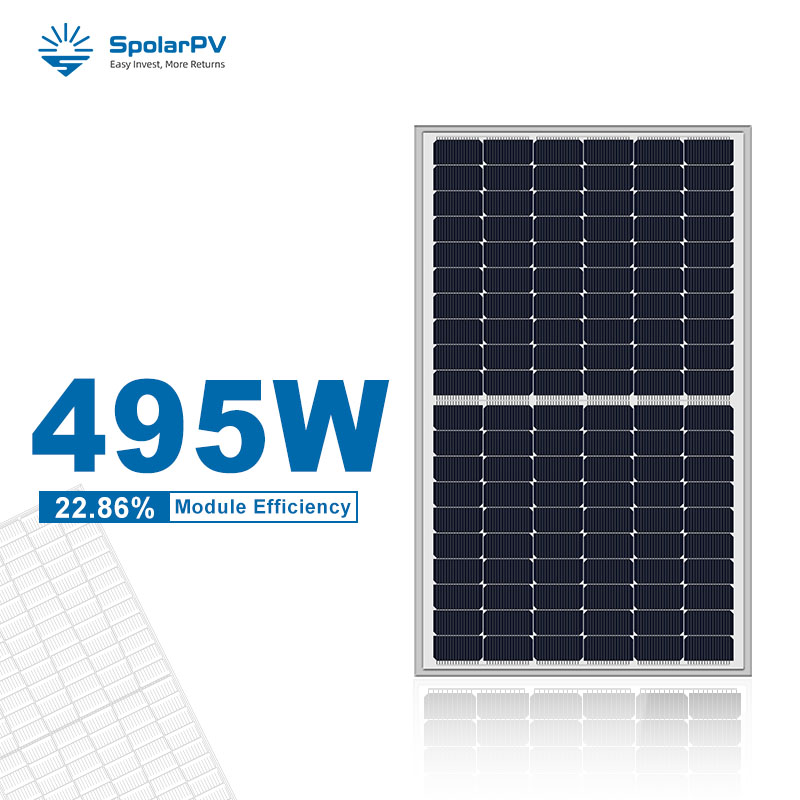
...
Residential Solar System
A residential solar system is a device that converts solar energy into electricity, providing clean and renewable energy for households. With the emphasis on environmental protection and sustainable development, more and more households are starting to install residential solar system.
The residential solar system consists of solar panels, inverters, batteries, controllers, etc. The solar panel collects solar energy and converts it into direct current energy. The inverter converts direct current into commonly used alternating current. The battery is used to store excess energy for emergency use, and the controller monitors and regulates the system.
The advantages of koodsun residential solar system are self-evident. Firstly, it can reduce dependence on traditional energy, reduce carbon emissions, and thus reduce negative impacts on the environment. Secondly, as solar energy is a renewable energy source, residential solar system can be used for a long time, greatly reducing the long-term cost of household energy. In addition, the installation and maintenance of residential solar system are also very simple, as it is only necessary to regularly clean the solar panels to keep them in good working condition at all times.
...
What is the difference between \"off-grid\" and \"grid-connected\" power generation systems?
According to the existing photovoltaic power generation projects on the market, combined with different application scenarios, solar photovoltaic power generation systems can be roughly divided into five types: grid-connected power generation systems, off-grid power generation systems, off-grid energy storage systems, and grid-connected energy storage systems and a variety of energy hybrid micro-grid systems.
And off-grid energy storage system
It is composed of photovoltaic modules, solar energy and off-grid integrated machine, battery (energy storage), load, etc. It is widely used in scenarios such as frequent power outages or photovoltaic self-use without surplus electricity, self-use electricity price is more expensive than on-grid electricity price, peak electricity price is more expensive than valley electricity price, etc.
The photovoltaic array converts solar energy into electrical energy under the condition of light, and supplies power to the load through the solar controller inverter integrated machine, and at the same time charges the battery; when there is no light, the battery supplies power to the solar controller inverter integrated machine. Then supply power to the AC load function. Dual mode switching to ensure power supply requirements.
Photovoltaic grid-connected energy storage system
It consists of photovoltaic modules, solar controllers, batteries, grid-connected inverters, current detection devices, loads, etc. It can increase the proportion of spontaneous self-use.
When the solar power is less than the load power, the system is powered by the solar power and the grid together. When the solar power is greater than the load power, the solar power supplies the load while storing the excess electricity through the inverter.
Microgrid system
A power distribution network composed of distributed power sources, loads, energy storage systems and control devices. The distributed energy can be converted into electrical energy on the spot, and then supplied to the local load nearby.
The microgrid system is an autonomous system capable of self-control, protection and management. It can not only be connected to the external power grid, but also can operate in isolation, which greatly solves the problem of distributed power grid connection and promotes the integration of distributed power The large-scale access of renewable energy is an efficient supply of multiple forms of energy for the load, and a smart grid system that realizes the active distribution network.
Secondly, let's talk about the difference between photovoltaic grid-connected and off-grid?
Photovoltaic grid-connected systems rely on the power grid and adopt the working mode of "spontaneous self-use, surplus electricity connected to the grid" or "full grid connection", while off-grid systems do not depend on the grid, relying on "storage while using" or "store first and use later". working mode.
Learning about Common Defects of Photovoltaic Modules
Crystalline silicon photovoltaic modules are an important part of the photovoltaic power generation system. The quality of the modules directly affects the power generation performance of the power station. The main components are tempered glass, EVA, cells, ribbons, backplanes, frames, junction boxes, sealants, etc. Material properties and common appearance defects are as follows:
Learn to understand the composition and structure of photovoltaic modules
1. Cells
Crystalline silicon cells are mainly made of semiconductor silicon. After the light is irradiated on the semiconductor, the P-N junction of the cell receives light (the P-type junction is silicon doped with trivalent boron, the N-type junction is silicon doped with pentavalent phosphorus, the junction of the two is the P-N junction, and silicon is tetravalent Semiconductors) create a potential difference and thus a current flow. At present, the thickness of the cell is 200±20μm, and it is easy to be damaged by force during the production process. The common problems are shown in the figure below:
2. Ribbon
The soldering strips used in multibusbar solar photovoltaic modules are tin-coated copper strips, which are divided into interconnection strips and bus strips. The interconnection strips are used to connect battery sheets, and the bus strips are used to connect battery strings, which play the role of conducting electricity and collecting electricity; common defects at the welding strips include welding There are material problems and welding problems, as shown in the figure below:
3. Glass
The photovoltaic module adopts low-iron toughened suede glass (or coating), which has the protection of battery cells, waterproof, high light transmittance, reliable wind pressure resistance, and hail impact resistance. Common problems can be divided into glass material reasons and external force reasons, as shown in the following figure:
4. EVA
EVA is used to encapsulate spliced battery strings, which is a copolymer of ethylene and vinyl acetate. EVA is non-viscosity at room temperature and easy to operate. After certain process conditions, hot pressing will undergo fusion bonding and cross-linking curing, and become completely transparent. The cured EVA can withstand atmospheric changes and is elastic. In addition, after it is bonded to glass, it can increase the light transmittance of the glass, play the role of anti-reflection, and have a gain effect on the output of solar cell components. Common problems can be divided into material reasons and process reasons, as shown in the following figure:
5. Backplane
At present, the commonly used backplane structures include TPT, TPE, TPF, KPK, KPF, etc., which are used as packaging materials on the back of the module. It reflects sunlight, so the efficiency of the module is slightly improved, and because of its high infrared emissivity, it can also reduce the operating temperature of the module, which is also conducive to improving the efficiency of the module. It also needs to have properties such as aging resistance, corrosion resistance, water vapor penetration resistance, and insulation. Common problems can be divided into backplane material, process, and external force reasons, as shown in the following figure:
6. Border
The frame used by the PERC photovoltaic module is aluminum profile, and the surface of the aluminum profile is anodized, which has the properties of insulation and corrosion resistance, protects the component, increases the load-bearing capacity, and is convenient for transportation and installation. Common problems can be divided into material reasons and external force reasons, as shown in the figure below:
7. Junction box
The junction box used by photovoltaic modules is composed of a box cover, a box body, a pole tube, a connecting wire, and a connector; the sealing method usually includes potting glue sealing and sealing ring sealing, and its main functions are as follows:
(1) Connect the lead wire of the component to derive the current generated by the component.
(2) Protection: heat dissipation, prevent hot spot effect, seal anti-aging.
The common problems of junction boxes are mainly due to material and process reasons, as shown in the following figure:
8. Sealant
Photovoltaic modules are currently mainly sealed with silica gel or adhesive tape, which must have the characteristics of waterproof, UV resistance, and weather resistance, as shown in the figure below:
(1) Connect the lead wire of the component to derive the current generated by the component.
(2) Protection: heat dissipation, prevent hot spot effect, seal anti-aging.
Introduction to Intelligent Control System of Solar Power Panel Internet of Things
Introduction to Intelligent Control System of Solar Power Panel Internet of Things
A solar panel is a device that uses solar energy to convert light energy into electrical energy, and is an important form of clean energy. The power generation efficiency and stability of solar power generation panels directly affect the feasibility and economy of solar power generation. With the development of the Internet of Things technology, the emergence of the solar power generation panel Internet of Things intelligent control system has brought new changes to the application of solar power generation.
1. The concept and composition of the solar panel IoT intelligent control system
the
The solar power panel IoT intelligent control system is a system that uses the Internet of Things technology to realize intelligent control of solar power panels. The system is composed of solar power panels, sensors, controllers, communication modules, data processing modules, etc., and realizes the monitoring, control and management of solar power panels through the Internet of Things technology.
1. Solar panels: Solar panels are the core components of solar power generation systems, responsible for converting solar energy into electrical energy.
2. Sensor: The sensor is an important part of the solar power panel IoT intelligent control system, which is responsible for monitoring the temperature, light intensity, voltage and other parameters of the solar power panel.
3. Controller: The controller is the core part of the solar power panel IoT intelligent control system, responsible for controlling and adjusting the solar power panel to ensure the normal operation of the solar power system.
4. Communication module: The communication module is an important part of the solar panel IoT intelligent control system, which is responsible for communicating with the Internet to realize remote control and management.
5. Data processing module: The data processing module is an important part of the solar panel IoT intelligent control system, which is responsible for processing and analyzing the data collected by the solar panel sensor and providing decision support.
2. Functions and advantages of the solar panel IoT intelligent control system
1. Remote monitoring and control: The solar power panel IoT intelligent control system can realize remote monitoring and control of solar power panels, which is convenient for users to perform remote management and control.
2. Intelligent adjustment: The intelligent control system of the solar power generation panel Internet of Things can perform intelligent adjustment and control according to the temperature, light intensity, voltage and other parameters of the solar power generation panel monitored in real time, so as to improve the efficiency and stability of the solar power generation system.
3. Fault diagnosis and early warning: The solar power panel IoT intelligent control system can monitor the operating status of the solar power panel, perform fault diagnosis and early warning in time, and reduce failure losses.
4. Energy saving and emission reduction: The solar power panel IoT intelligent control system can intelligently manage and control the solar power generation system, saving energy and reducing carbon emissions.
5. Improve economic benefits: The solar power panel IoT intelligent control system can improve the efficiency and stability of the solar power generation system, reduce operating costs, and improve economic benefits.
3. Application of solar power panel IoT intelligent control system
The solar panel IoT intelligent control system can be widely used in the field of solar power generation, including household solar power generation, commercial solar power generation, industrial solar power generation and other fields. Specific applications include:
1. Home solar power generation system: The solar power panel IoT intelligent control system can realize remote monitoring and control of the home solar power generation system, improving the efficiency and stability of the solar power generation system.
2. Commercial solar power generation system: The solar power panel IoT intelligent control system can realize intelligent management and control of commercial solar power generation systems and improve economic benefits.
3. Industrial solar power generation system: The intelligent control system of the solar power generation panel Internet of Things can realize the intelligent control and adjustment of the industrial solar power generation system, and improve the efficiency and stability of the solar power generation system.
4. Conclusion
The solar power panel IoT intelligent control system is a system that uses the Internet of Things technology to realize intelligent control of solar power panels. It has the advantages of remote monitoring and control, intelligent adjustment, fault diagnosis and early warning, energy saving and emission reduction, and improvement of economic benefits. The system can be widely used in the field of solar power generation, and has brought new changes to the application of solar power generation.

